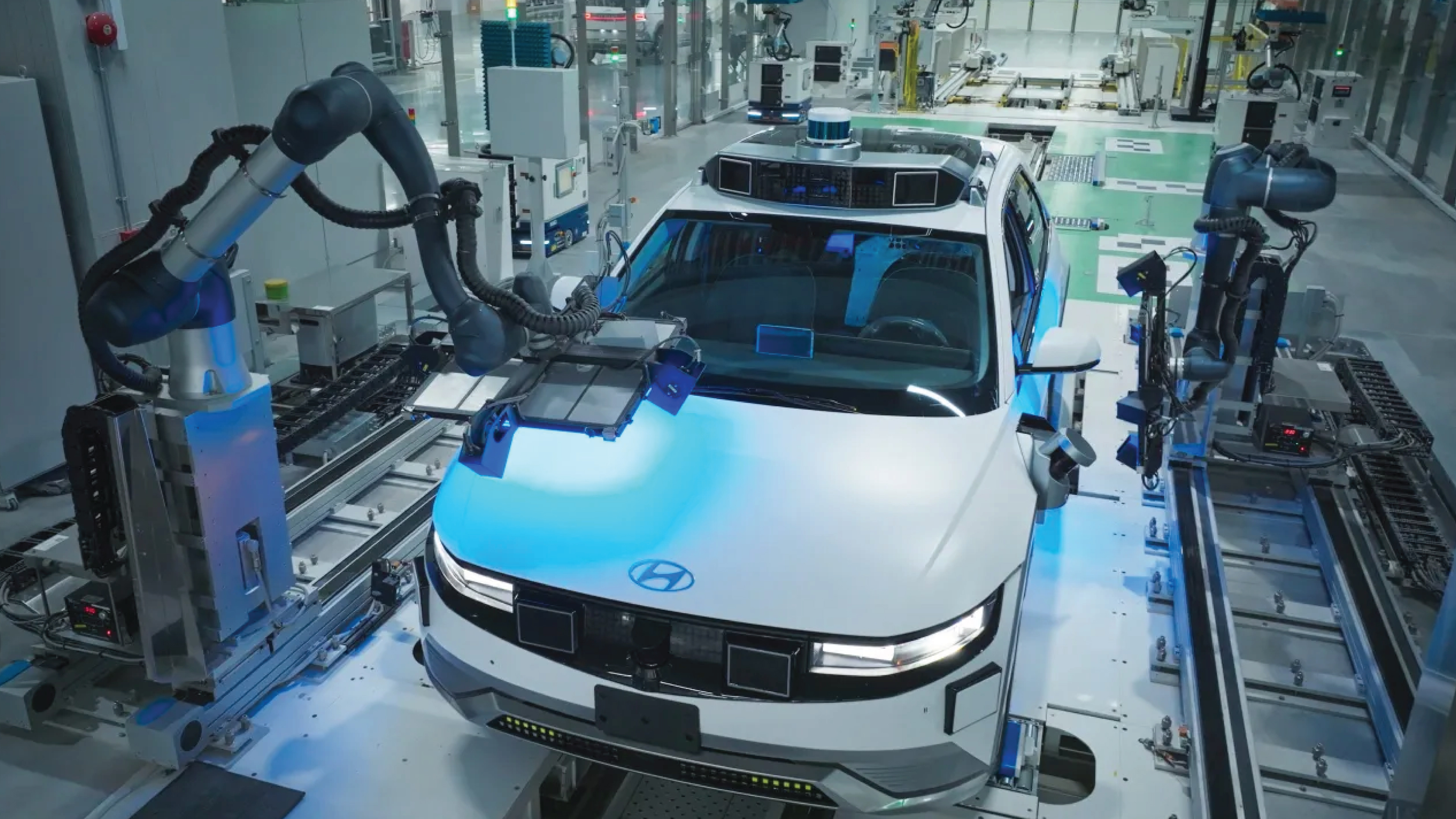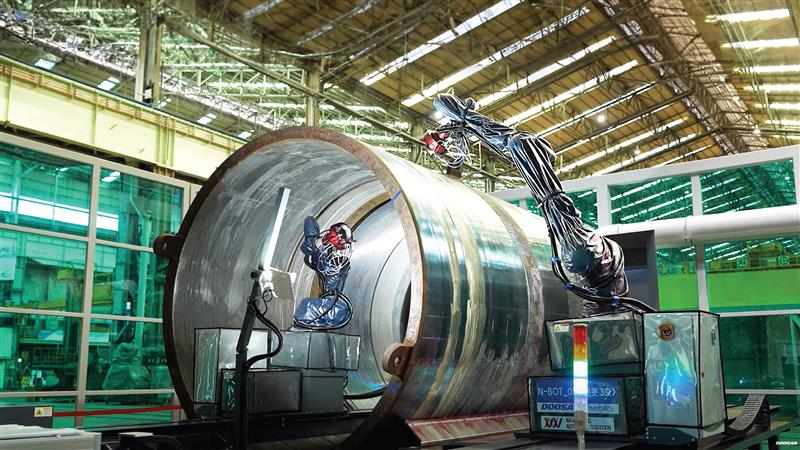How Automation Robots Are Changing the Way We Work
2025. 09. 29
Understanding Collaborative Robots: The Future of Factory Automation
The role of cobots in manufacturing has become central to the future of factory automation. Collaborative robots – better known as cobots – combine the precision of machines with the adaptability of humans. Unlike traditional robots, cobots are designed to work safely alongside people, enabling factories to automate key tasks while empowering their workforce.
Cobots are no longer experimental – they’re widely deployed across industries in the U.S. and globally, helping businesses improve efficiency, safety, and competitiveness.
Key Features that Make Cobots Essential in Automation
Safety-Centric Design
Cobots come with advanced safety systems – force sensors, vision technology, and collision detection – that allow them
to stop instantly when encountering unexpected contact.
Doosan Robotics cobots set a new safety benchmark, surpassing standard PL d, Cat 3, with functional safety at PL e, Cat
4. With features like virtual workspaces, they create one of the safest environments for human-robot collaboration.
User-Friendly Programming
Cobots are designed for simplicity. Workers can program them using “teaching by demonstration,” guiding the robot by hand. This removes the need for coding expertise and makes automation accessible to all.
Flexibility and Mobility
Unlike traditional fixed robots, cobots can be easily moved between workstations. This adaptability allows small and medium-sized businesses to effectively leverage various automation solutions and expand automation at their own pace.

The Role of Collaborative Robots in Manufacturing Across Industries
Automotive Manufacturing: Precision Assembly
In the automotive industry, cobots excel at tasks requiring consistent precision. For instance, while human workers oversee complex assembly processes, cobots can handle tasks like electronic component installation, welding, and bonding. This enhances productivity while meeting the strict quality standards of automotive manufacturing.
Electronics Production: Small Component Handling
The electronics industry demands high precision for handling small, delicate components. Cobots can place parts onto circuit boards with millimeter accuracy and operate tirelessly for extended periods. This enables human workers to focus on high-level tasks like quality control and problem-solving.
Food and Beverage: Consistent Quality and Worker Safety
Doosan cobots are increasingly used to automate tasks like cooking, brewing, and packaging. By automating recipes, they deliver consistent taste and quality while protecting workers from risks like steam and fumes in high-temperature environments.
Healthcare and Medical Devices: Precision and Consistency
The healthcare industry requires exceptional precision and consistency. Cobots assist surgeons in delicate procedures, improving surgical outcomes, reducing recovery times, and enhancing patient safety.

Why Global Companies Trust Doosan Robotics Collaborative Robots
Addressing Labor Shortages
Many industries struggle with labor shortages, especially for repetitive tasks. Cobots fill these gaps, enabling human workers to focus on more creative and high-value tasks. This shift improves efficiency while boosting employee satisfaction.
Improving Workplace Safety
Repetitive motions and heavy lifting are the leading causes of workplace injuries. By automating these tasks with Doosan cobots, businesses significantly reduce injury-related costs. Many companies report lower employee fatigue and decrease repetitive strain injuries after adopting cobots.
Ensuring Consistent Quality
Unlike human workers who may be affected by fatigue, stress, or loss of concentration, cobots perform tasks with unwavering precision. This results in fewer defects and improved reliability in product quality.
Real-World Benefits of Cobots in Automation
Fast Installation
Installing cobots is quick and hassle-free. Simply communicate your requirements, and Doosan Robotics can complete the setup efficiently, with minimal disruption to your business processes.
Easy Training
Training workers to use cobots typically takes just a few hours to a week. Thanks to an intuitive programming interface, both engineers and on-site workers can modify programs and teach cobots new tasks.
Common Applications
- Pick-and-Place: Moving items between locations
- Assembly: Tightening screws, placing or combining parts
- Quality Inspection: Detecting defects using cameras
- Packaging: Loading products into boxes or containers
- Machine Tending: Managing the loading and unloading of CNC or other equipment
Beyond these processes, cobots can be utilized for a wide variety of tasks.
Link : Learn more Applications

How Cobots Work: Inside the Technology
Sensors and Safety Systems
Cobots use various sensors to perceive their environment. Vision systems identify part locations and detect obstacles, while force sensors adjust movements in response to unexpected resistance.
AI Integration
Many cobots today leverage AI capabilities, adapting to changes in components or processes. For example, AI-enabled vision systems can detect subtle differences in part shapes or sizes and adjust the grip accordingly.
Connectivity and Data Collection
Connected to factory networks, cobots provide real-time data on production speed, quality metrics, and maintenance needs. This allows management to make informed decisions about production planning and equipment upkeep.
Future Outlook: Robots and Cobots in Manufacturing
Cobots are becoming stronger, smarter, and easier to program. With AI, advanced sensors, and increased connectivity, the
future of robots in manufacturing promises even more productivity gains.
Beyond factories, cobots are expanding into logistics, retail, and healthcare, proving their value across industries.
Importantly, the role of cobots in manufacturing isn’t to replace workers – it’s to complement them. By handling
repetitive or hazardous tasks, cobots enable humans to focus on problem-solving, creativity, and supervision.
Conclusion: Are Collaborative Robots Right for Your Business?
If your business faces challenges like:
- Labor shortages
- Safety risks
- Quality variability
- Repetitive tasks
- Scaling production demands
…then cobots may be the right automation solution for you.
At Doosan Robotics, we provide advanced cobots backed by localized support for businesses across the world.
Link : Go to Doosan Robotics America
Take the Next Step with Doosan Robotics
Ready to explore the role of cobots in manufacturing for your business?
Doosan Robotics offers cutting-edge cobot technologies that are revolutionizing factories across industries. From small businesses to large corporations, cobots deliver reliable solutions to pressing operational challenges. Contact Doosan Robotics today to discover how collaborative robots can help optimize your processes and elevate your business.
Let’s shape the future of automation, together!

